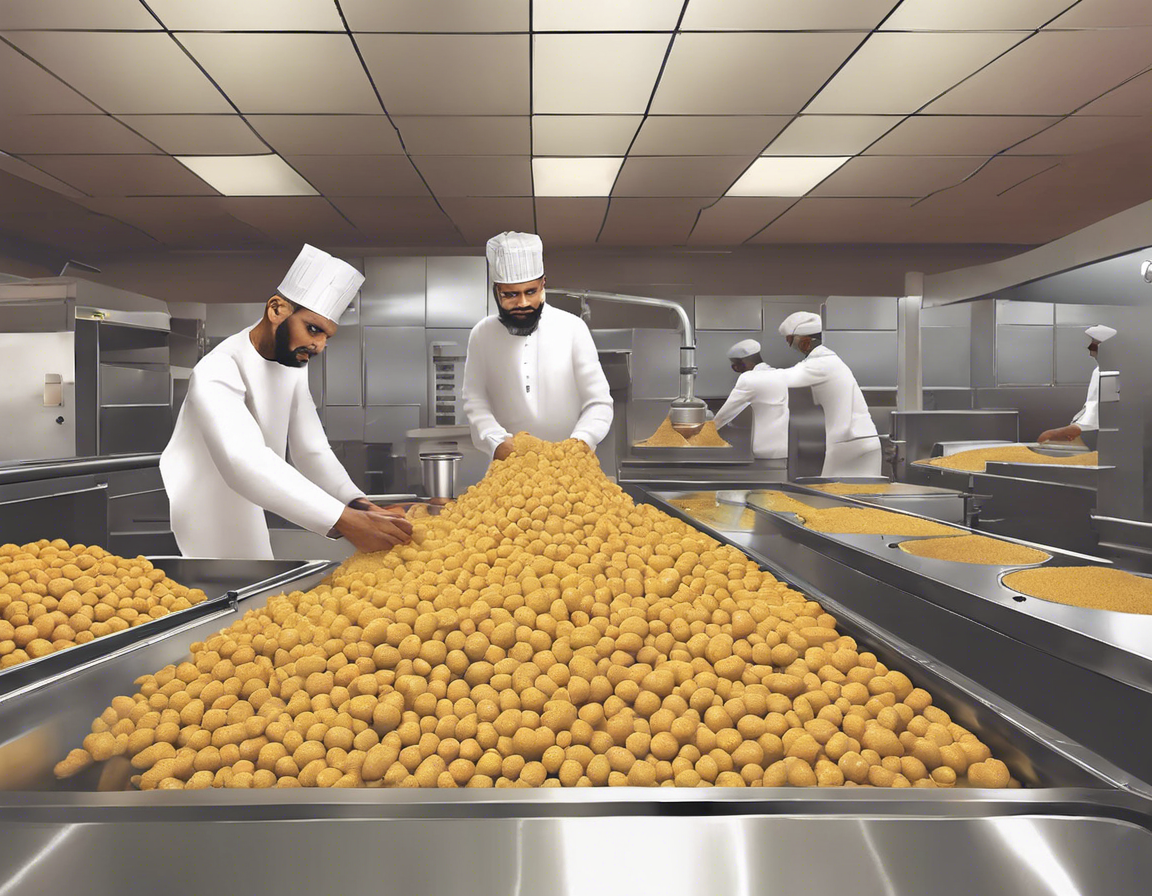Introduction
Baba Food Processing is a well-known player in the food processing industry with a strong presence in the market. As an investor looking to analyze the share price of Baba Food Processing, it’s essential to consider various factors that can influence its performance and investment potential. In this comprehensive article, we will delve deep into the share price analysis of Baba Food Processing, understanding the key drivers, trends, and indicators that can impact its valuation.
Industry Overview
Baba Food Processing operates in the food processing industry, a sector known for its stability and resilience. With an increasing focus on health and wellness, consumers are seeking out natural and organic food products, which presents a significant growth opportunity for companies like Baba Food Processing. The industry is also influenced by factors such as changing consumer preferences, regulatory environment, and technological advancements.
Financial Performance
One of the critical aspects of analyzing the share price of Baba Food Processing is understanding its financial performance. Investors typically look at key financial metrics such as revenue growth, profitability, and cash flow generation. By examining the company’s income statement, balance sheet, and cash flow statement, investors can gain insights into its financial health and stability.
Market Position
Baba Food Processing’s market position is crucial in determining its share price performance. Factors such as market share, competitive landscape, and brand strength can impact the company’s ability to generate revenue and profitability. By analyzing Baba Food Processing’s market position relative to its peers, investors can assess its competitive advantage and growth prospects.
Macro-Economic Factors
External factors such as economic conditions, consumer spending, and industry trends can also impact the share price of Baba Food Processing. Changes in interest rates, inflation, and global economic conditions can influence the company’s performance and valuation. By staying abreast of macro-economic trends, investors can better understand the external forces shaping Baba Food Processing’s share price.
Key Performance Indicators
When analyzing the share price of Baba Food Processing, it’s essential to look at key performance indicators (KPIs) that provide insights into the company’s operational and financial performance. KPIs such as earnings per share (EPS), price-to-earnings (P/E) ratio, return on investment (ROI), and debt-to-equity ratio can help investors evaluate the company’s valuation and growth potential.
Technical Analysis
In addition to fundamental analysis, technical analysis plays a crucial role in predicting the future movements of Baba Food Processing’s share price. By examining historical price patterns, trends, and trading volumes, investors can identify potential buying or selling opportunities. Technical indicators such as moving averages, relative strength index (RSI), and MACD can help investors make informed decisions.
Investment Potential
Based on the share price analysis of Baba Food Processing, investors can determine the company’s investment potential. Factors such as growth prospects, competitive advantages, and industry trends can influence the decision to invest in the company. By conducting a thorough analysis of Baba Food Processing’s financials, market position, and valuation, investors can make informed decisions about buying, holding, or selling its shares.
Frequently Asked Questions (FAQs)
- What factors can impact the share price of Baba Food Processing?
-
Factors such as financial performance, market position, macro-economic trends, and industry dynamics can influence the share price of Baba Food Processing.
-
How can investors assess the financial health of Baba Food Processing?
-
Investors can assess the financial health of Baba Food Processing by analyzing its income statement, balance sheet, cash flow statement, and key financial metrics such as revenue growth and profitability.
-
What role does market position play in determining the share price of Baba Food Processing?
-
Market position is crucial in determining the share price of Baba Food Processing as it reflects the company’s competitive advantage, growth prospects, and ability to generate revenue.
-
What are some key performance indicators to consider when analyzing Baba Food Processing’s share price?
-
Key performance indicators such as earnings per share (EPS), price-to-earnings (P/E) ratio, return on investment (ROI), and debt-to-equity ratio are important metrics to evaluate Baba Food Processing’s valuation and performance.
-
How can technical analysis help in predicting the share price movements of Baba Food Processing?
- Technical analysis can help investors predict the future movements of Baba Food Processing’s share price by analyzing historical price patterns, trends, and trading volumes using indicators like moving averages and RSI.
In conclusion, conducting a thorough share price analysis of Baba Food Processing involves examining various factors that can impact its valuation and investment potential. By considering aspects such as financial performance, market position, macro-economic trends, and key performance indicators, investors can make informed decisions about investing in Baba Food Processing’s shares. It is important to combine both fundamental and technical analysis to gain a comprehensive understanding of the company’s performance and future prospects.




